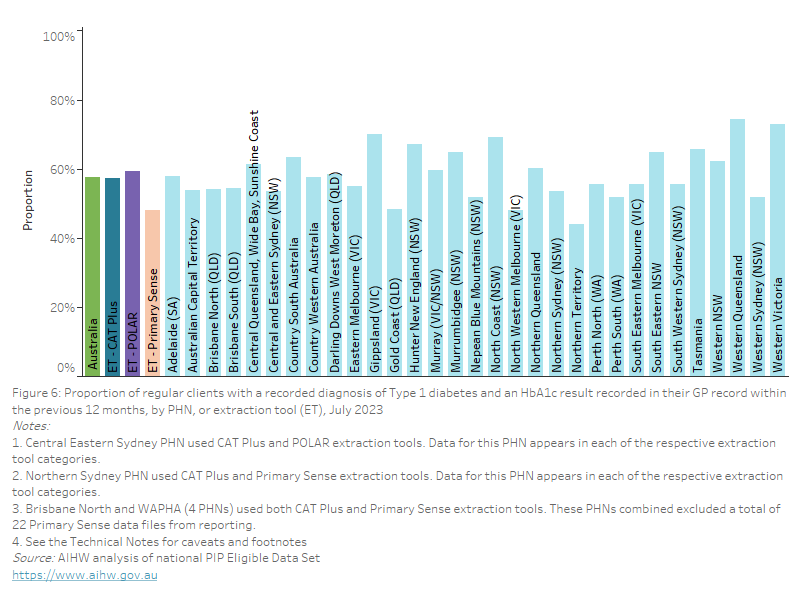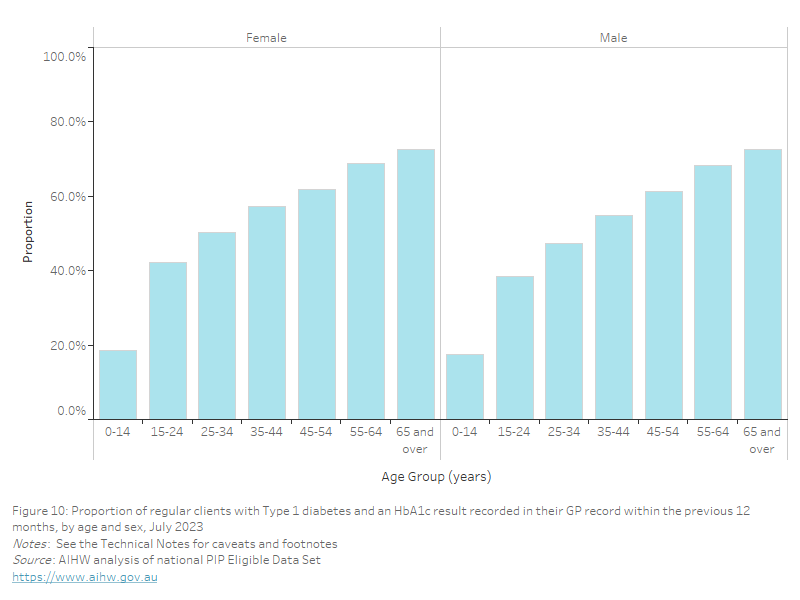QIM 9: Proportion of regular female clients with an up-to-date cervical screening test recorded in their GP record within the previous 5 years
Overview
Cervical cancer develops when abnormal cells in the lining of the cervix begin to multiply out of control and form pre-cancerous lesions. If undetected, these lesions can develop into tumours and spread into the surrounding tissue. Australia commenced an organised program of routine cervical screening of the eligible female population in 1991, and the cervical screening test was introduced in Australia in December 2017, replacing the old Pap smear test. The Pap smear test used to look for changes in the cells of the cervix. The new cervical screening test looks for evidence of the human papillomavirus (HPV), which can lead to cell changes in the cervix (AIHW 2019c). In Australia, cervical cancer accounts for less than 2% of all female cancers, with a relatively low incidence of 7 new cases per 100,000 women of all ages (AIHW 2019c).
Women aged 25 to 74 years become eligible to receive their first cervical screening test 2 years after the last Pap smear test was done, and then the cervical screening test should be conducted every 5 years. A small minority of data from Pap smear tests performed before December 2017 may be included in the report.
Capture of results recorded outside of the general practice setting
Results arising from cervical screening tests conducted outside of the service that are known and recorded by the practice are included in the measure. However, sometimes cervical screening test results recorded elsewhere are not captured in this report. For example, this might be a result from a community health centre, women’s health centre, family planning or sexual health clinic that is not recorded in the clinical information system (CISs) of the client’s usual general practice due to an incompatible CISs between a practice and a specialist service.
Other sources of relevant data
There are other administrative data collections where the data on cervical screening tests are captured, for example, the National Cancer Screening Register (NCSR).
This indicator reports on the proportion of regular female clients aged 25 to 74 years, who have not had a hysterectomy, who had a cervical screening test (for human papillomavirus) recorded in their GP record after 1 December 2017 and within the previous 5 years.
The QIM proportions summarised by the different extraction tools in use are also shown in the ‘Regional proportions’ bar charts for this measure. This illustrates the differences in how software providers have interpreted the technical specifications and coding of QIMs.
QIM 9: Regional proportions
As of July 2023, nationally, 37.5% of regular female clients aged 25 to 74 years had a cervical screening test recorded in their GP record after 1 December 2017 and within the previous 5 years. This varied from 22.4% to 51.8% across PHNs, and between 34.9% and 38.3% across extraction tools.
Figure 50: Proportion of regular female clients aged 25 to 74 years with a cervical screening test recorded in their GP record within the previous 5 years, by PHN, or extraction tool (ET), July 2023
This bar chart shows the proportion of female regular clients aged 25 to 74 years with a cervical screening test recorded in their GP record, by PHN and extraction tool, for July 2023.

QIM 9: National proportions over time
Nationally, between January 2023 and July 2023, the proportion of regular female clients who had a cervical screening test recorded in their GP record after 1 December 2017 and within the previous 5 years remained constant at 38.2% and 37.5%, respectively.
Figure 51: Proportion of regular female clients aged 25 to 74 years with a cervical screening test recorded in their GP record within the previous 5 years, January 2023 to July 2023
This line chart shows the proportion of female regular clients aged 25 to 74 years with a cervical screening test recorded in their GP record within the previous 5 years, from January 2023 to July 2023
%3dQIM9+-+SCREENED&embed_code_version=3&tabs=no&toolbar=no&showAppBanner=false)
QIM 9: National proportions by age
As of July 2023, nationally, the proportion of regular female clients aged 25 to 74 years with a cervical screening test recorded in their GP record after 1 December 2017 and within the previous 5 years was highest in the 45–54 years age group (42.0%) and lowest in the 25-34 years age group (32.2%).
Figure 52: Proportion of regular female clients aged 25 to 74 years with a cervical screening test recorded in their GP record within the previous 5 years, by age, July 2023
This bar chart shows the proportion of female regular clients aged 25 to 74 years with a cervical screening test recorded in their GP record within the previous 5 years, by age for July 2023

- Data are reported quarterly for services delivered in the given period (5 years).
- A small minority of data from Pap smear tests conducted prior to 1 December 2017 may be included in this report.
- Results arising from clinical intervention conducted outside of the service that are known and recorded by the service are included in the measure.
- Clients who had a sub-total hysterectomy are included in the measure.
- HPV tests where the sample is either collected by a health practitioner or self-collected are included.
- Clients are excluded from the measure if they:
- had a complete hysterectomy,
- did not have the test due to documented medical reasons, system reasons (test not available), or client reasons (e.g. refusal),
- had results from measurements conducted outside of the service which were not available to the service, or
- no longer require testing.
- There are other administrative data collections where the data on cervical screening test are captured for example, the National Cancer Screening Register (NCSR).
AIHW (Australian Institute of Health and Welfare) (2019c) Cervical screening in Australia 2019, Cancer series no. 123. Cat. no. CAN 124, AIHW, Canberra, accessed 9 July 2023.


